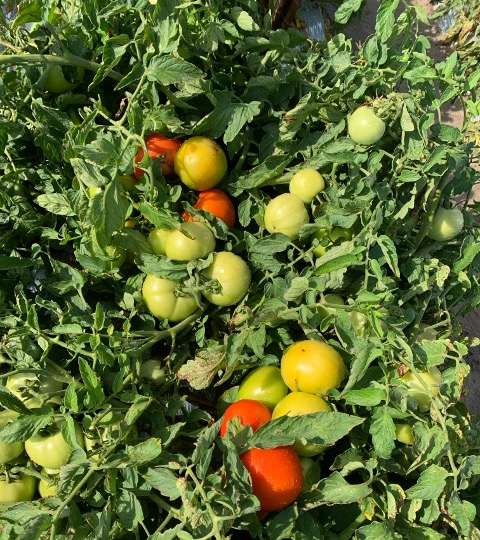Ever since Florida farmers have been producing tomatoes, they’ve picked them by hand or hired laborers. It’s painstaking work that might be made easier soon with machine-harvestable tomatoes developed by University of Florida Institute of Food and Agricultural Sciences researchers.

Now that the varieties are available, growers in Florida’s $400 million-a-year industry hope they can use mechanized harvesting, but doubts remain.
The new varieties were decades in the making, said Jessica Chitwood-Brown, the tomato breeder at the University of Florida Gulf Coast Research and Education Center (GCREC).
“Tomato harvesting is strenuous, manual labor, and not many people seek these kinds of jobs,” Chitwood-Brown said. “This is true for agricultural industries around the world — not just in Florida — and in all kinds of crops. But it is a very real threat to Florida’s tomato industry.
“We can see examples of the effort to mechanize and alleviate the pressure from the lack of labor in packing houses and other parts of the supply chain,” she added. “However, field production and harvesting in particular have a real challenge. Being able to harvest fresh market tomatoes with a machine would have a huge impact on growers and the labor problems.”
After many years of work by former UF/IFAS tomato breeders Jay Scott and Sam Hutton, the latter released the hybrid cultivars last year. Chitwood-Brown, who earned her Ph.D. under Hutton’s supervision and then worked as a post-doctoral researcher in his lab, credits Hutton and Scott for the new cultivars.
More Research Needed
Now, she is trying to make sure Florida’s growers can use machines to harvest the tomatoes.
“We aren’t all the way there yet. There is research that still needs to be done, but with the release of these new cultivars, I think we are much closer than even a few years ago,” said Chitwood-Brown.
There are traits necessary in tomato cultivars for mechanical harvesting to be possible. One is a tomato that does not need to be staked and tied. Stakes and ties get in the way of the harvester.
They also need to have jointless pedicels, so they detach from the stem.
“These two traits have been around for a long time but getting them in the right combinations with other traits that result in a viable tomato cultivar with the other necessary traits — yield, fruit size, quality, etc — has taken a lot of work by the past breeders,” Chitwood-Brown said.
Michael Schadler, manager of the Florida Tomato Committee, said growers are expressing hope and skepticism about mechanized harvest.
“Everyone recognizes that it could help level the playing field vis-à-vis Mexico’s labor advantage, but there are so many variables that we have to get right to make it work,” Schadler said. “If there is a reduction in yield from the mechanized production system, will the reduction in input and labor costs be significant enough to make the economics work? That’s a big if.”









